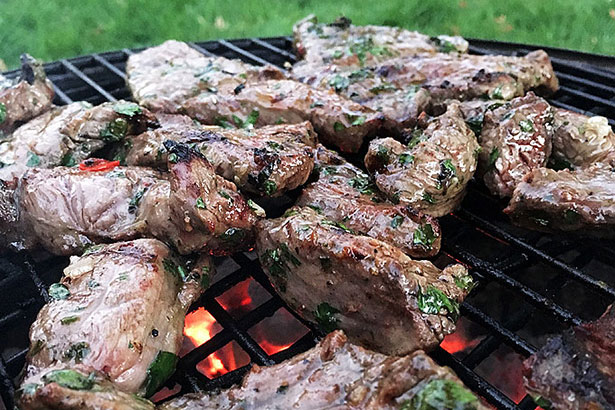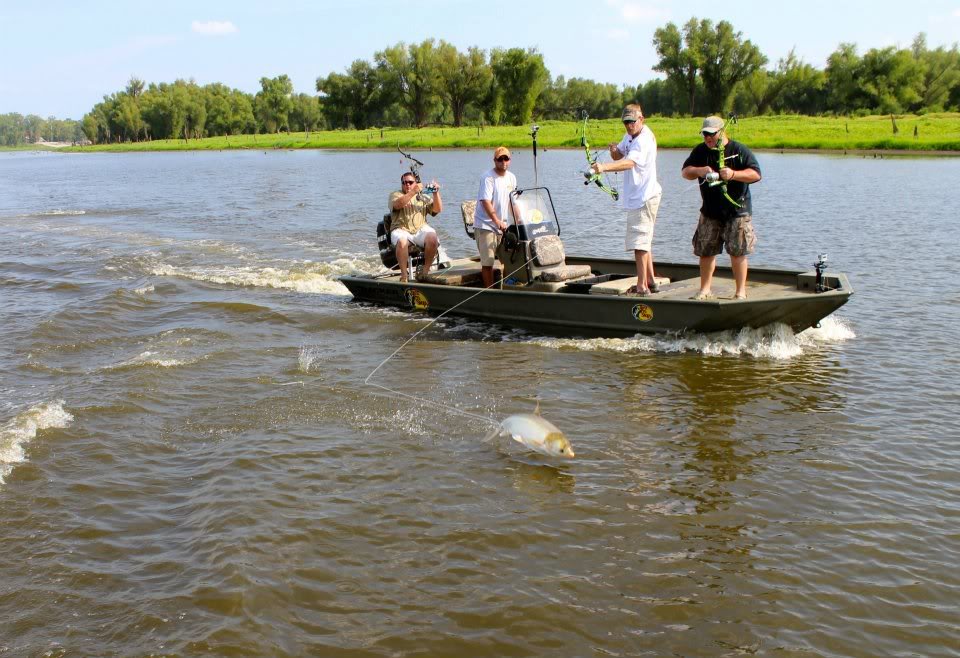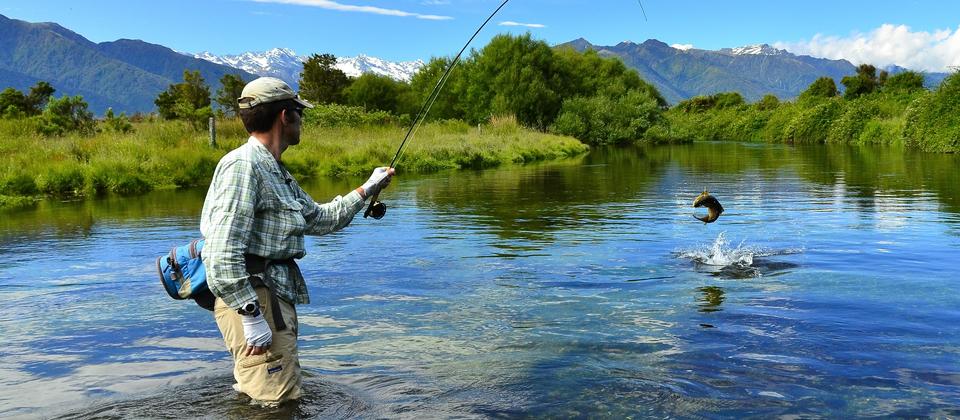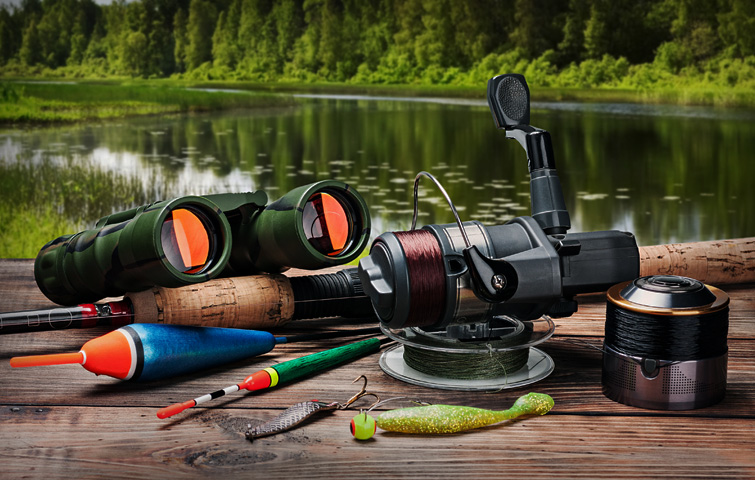The art of outdoor fire cooking over an open-fire or pit cooking has all but been abandoned by today’s sportsmen. Hunting camps are equipped with the latest kitchen appliances, stoves, microwaves, BBQ grills, smoker-cookers etc., hell I wouldn’t be surprised to find a cappuccino machine in some camps.
For the more adventuresome cook, we are going to talk about cooking over the open-fire and also pit cooking. The taste of wild game cooked over an open-fire stoked by hot hickory coals is un-equaled in taste.
Fried Squirrel
Fried squirrels make an excellent meal. Simply use a hatchet to chop off the head, feet, and tails. Next, cut the skin crosswise on the back using two middle fingers, pull the skin off the squirrel. Then clean and cut them into halves, leaving a couple of ribs on quarters. Boil some water in a kettle and place the forequarters and hindquarters in the kettle, parboiling until tender. This usually takes approximately 20-30 minutes.
Take a sharpened knife and test doneness, when the knife will easily cut through the meat, remove the hindquarters from the kettle. Drain and pat dry. The secret to some finely fried squirrel is to place the hindquarters into a frying pan containing piping hot pork fat. Fry until golden brown. The forequarters can be used for stew if you wish.
Squirrel Stew
Take a four-five quart kettle filled two-thirds full with water. Bring water to a robust boil and place 12-15 forequarters into boiling water. When the squirrel meat begins to fall off the bone, blend about three tablespoons of flour and two tablespoons of melted butter. Next, take some liquor from the stew and mix to the consistency of a cream and slowly pour mixture into the stew kettle, stirring constantly.
Allow mixtures to slow boil for about an hour before adding salt and pepper. Use salt sparingly, it’s easier to add than remove. Wash and cut 5-6 large potatoes into quarters and place into a stew with desired vegetables and allow stew to slow boil for another hour. Prepare cornbread and ring the bell, supper is served.
Campfire Quail
Parboil quail in the same manner as the squirrel for approximately 20 minutes. Meanwhile, cut hardwood sticks (branches) a couple of feet long for each bird. Both ends of the stick should be sharpened. Place each quail on one end of the sticks with the other end stuck in the ground near to the fire so that the heat is distributed evenly and strong. Place bacon between legs of each quail and frequently turn the birds so that they cook evenly. Cook to a golden brown.
Woodcock
Woodcock should be plucked and not drawn. The woodcock should be suspended above the fire just out of reach of the direct flame. In other words, the woodcock should be cooked over clear heat. As with the quail, bacon should be placed between the legs and the bird should be roasted until it is well done. The woodcock need not be parboiled.
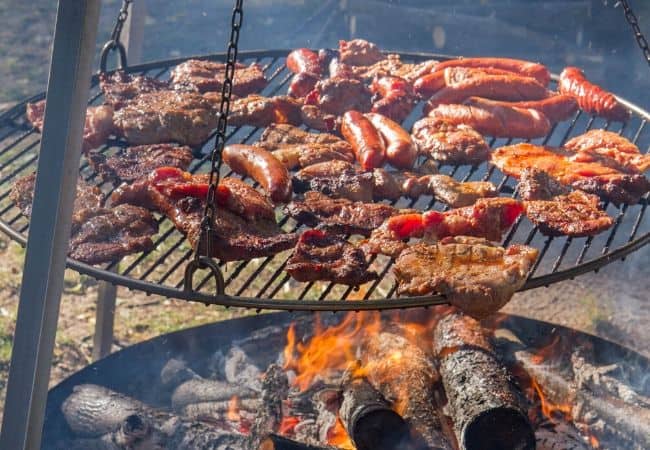
Ruffed Grouse
The ruffed grouse is another bird that is excellent when roasted over an open campfire. This bird should be parboiled first, along with the mallard, teal, canvasback and all edible ducks should be prepared same as the ruffed grouse.
Venison
Pound the venison steak to tenderness. Broiled over a bed of hardwood coals greatly enhances the flavor of the venison. If you can find a birch tree, obtain a branch with a three-pronged fork, this will make a great broiler.
The forward part of the saddle makes for the best roast venison. Trim the rib ends and flank parts, the backbone should be split lengthwise so that the inner surface is exposed. Hang above an even, powerful heat and place slices of bacon on the upper edge, turning occasionally until done, leave a little rare.
The shoulder is very good for roasting. To roast the shoulder over an open fire, cut gashes into the thick part of the shoulder and place slices of bacon into the slits. Roast the shoulder in the same way as the saddle above.
Cooking Fish
Cooking fish is the simplest of all cooking methods and does not need to be complicated. The frying pan is appropriate for any fish under two pounds.
Split down the back or filleted the fish should lay well into the frying pan so that it cooks evenly. The fish should be rolled in a meal or a combination of flour and meal and fried to a rich brown in hot oil.
There is a method of cooking usually called “mudding up,” which I have found to preserve the flavor and juiciness of ducks, grouse, etc., better than any other method.
